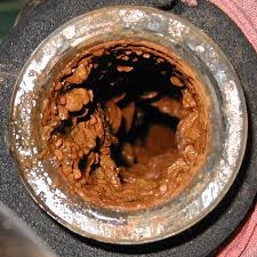Biofilm is one of the most underestimated threats to poultry health. Poultry farmers often have strict protocols when it comes to hygiene in and around the housing unit, but they often overlook the drinking system itself. In this article, we explain the dangers of biofilm and how to prevent biofilm build-up as much as possible.
The benefit of a closed drinking water system is that no dirt ends up in the water, in contrast to (semi-)open water systems, where this does happen. However, the danger is that you no longer see the water, and you are no longer aware of the quality of the water. Having to regularly clean your (semi-)open water systems was an annoying chore, but at least you were constantly reminded how dirty the drinking water could become. In a closed drinking water system, the drinking water is less likely to become polluted, but bacteria, fungi, and minerals flourish in the slow-flowing, warm, and nutrient-rich water.
Among others, lime, iron, and manganese create a rough structure on the inside of the drinking line. This rough structure ensures that (especially) medicine residues can easily adhere. The sugars in these medicine residues are, in turn, a perfect breeding ground for bacteria and fungi. All this causes a slimy layer to form on the inside of the drinking line, called biofilm. The biofilm then protects the harmful microorganisms from antibacterial agents, allowing them to multiply and spread.

The presence of biofilm in the drinking lines can have serious consequences. For example, the effectiveness of medicines and vaccines can decrease, causing your animals to ingest an insufficient amount of the treatment. Additionally, pieces of the biofilm can break off and end up in the drinking nipple. As a result, the drinking nipple may no longer close properly and will start to leak.
Once a biofilm has formed, it can be quite challenging to get rid of it and, above all, to prevent it from coming back. Even if you manage to remove the biofilm, it can return in a day or three. That is why it is so important to prevent biofilm build-up in the drinking lines as much as possible.

One of the easiest ways to minimize the build-up is routine flushing and cleaning. In addition, it is important to flush and clean the drinking lines thoroughly after using additives or medicines. This will wash away the primary food sources for bacteria.
It is also important to thoroughly flush and clean the drinking system between flocks. This is especially important if the lines are not used for an extended period of time. So at the end of a round, be sure to flush and clean the lines thoroughly and then drain them completely. Open the drinking lines and activate all drinking nipples to get the last of the water out.

An automatic flushing system is a great solution to regularly and easily flush the drinking lines and thus prevent biofilm build-up. The computer controls the complete flushing process based on a personalized program. You set the frequency with which the computer should flush the system, which lines should be flushed, and how long the flushing should last.
In addition, the system can use information from sensors in drinking lines. These sensors measure the water temperature and the turbidity of the water. As soon as the sensors detect a deviation, the flushing computer receives the signal to flush the drinking lines automatically.
To avoid excessive flushing, you can set a maximum number of flushings. When it reaches this maximum, the computer stops flushing and signals that you need to take further action.



 Qualité de l’eau et hygiène
Qualité de l’eau et hygiène  Systèmes d’abreuvement
Systèmes d’abreuvement  Solutions d'abreuvement pour porcs
Solutions d'abreuvement pour porcs 